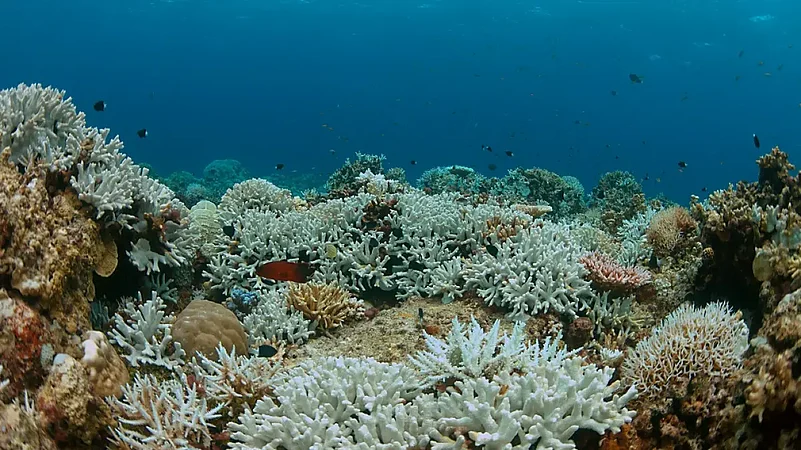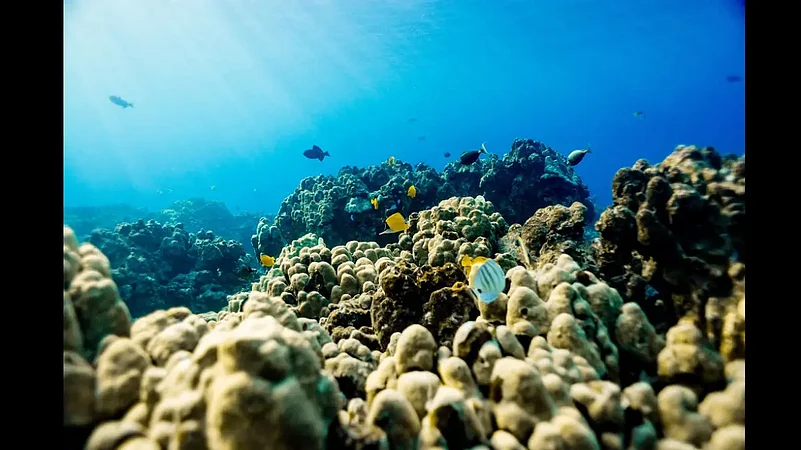In the middle of March this year, I participated in a scuba diving excursion for the first time in my life, off the beach of Tarkarli in Maharashtra. The diving spot was quite some distance from the beach in the open sea close to the Vengurla Lighthouse. Apart from the novelty of the experience, the experience was sadly unremarkable, mostly because night had set in by the time I plunged into the water. Despite the lack of visibility, I did see shimmering shoals of silver and orange fishes. Above all, I remember the brown corals near the seafloor—fragile, to the extent that our instructors had repeatedly told us not to kick or touch them, even accidentally, should they disintegrate. At the same time, I kept thinking of the integral, anchor-like role corals play not just in underwater ecosystems but also for land inhabitants.
My conflicted memories and thoughts on corals arose when I came across a report of a study, conducted by Arizona State University scientists together with the Julie Ann Wrigley Global Futures Laboratory, that mapped the state and location of living corals after a marine heatwave. The findings are not encouraging. Coral ecosystems are estimated to affect more than half a billion people around the world who depend on them for food, jobs, recreation, coastal protection and more. And yet, these sensitive ecosystems have been facing a host of threats in the past few years: warm ocean temperatures, overtourism, climate change and diseases, to name a few.
It is probably the rising ocean temperatures (caused by human-induced climate change) that is affecting live corals the most. 2021 saw the hottest ocean temperatures being recorded in human history. This followed after the temperatures measured in 2019 showed that the heat energy we have pumped in the oceans was equivalent to that generated by 3.6 billion Hiroshima atom-bomb explosions. 2021 was also the sixth consecutive year in which the recorded temperature shattered pre-existing records.
The effects of this incessant warming on the corals are drastic, to say the least. It has long been feared that warming up of oceans leads to coral bleaching, a phenomenon in which corals turn white and lose all beneficial aspects due to the stripping away of symbiotic algae called zooxanthellae from the tissues of the corals. The previously mentioned study has confirmed the worst fears.

Basing their findings on a coral bleaching incident that happened in 2019 in Hawaii, the researchers have been able to segregate stressed corals affected by climate crisis and warm temperatures as “winners” and “losers”. The researchers believe that this distinction is important to understand how exactly the behaviour of the corals changes and where and how they survive despite facing climate change and high temperatures. The conclusions drawn seem to be straightforward enough: the winning corals are found in regions with cleaner water and less coastal development.
Not all of it has to do with climate change and warmer temperatures. The researchers have also linked coral degeneration with pollution generated from coast-based development activities that can destroy entire reefs. Contrastingly, the scientists identified more than 10 potential coral refugia, where corals may survive and thrive despite the threats. In these areas, the coral mortality rate is 40% lower compared to unprotected areas.
The tourism sector also plays an important role, but it is a double-edged sword. There is evidence to suggest that marine, and particularly coral reef, tourism generates billions of dollars in revenue that can be used to spread awareness on and conserve marine ecosystems and coral reefs. On the other hand, commercial tourism and overtourism have sounded the death knell for corals around the world. For instance, another recent report found out that coral reefs in the Red Sea have benefited handsomely from a drop in the number of tourists, especially scuba divers and snorkelers. Yet, as a New York Times story states, the solution lies perhaps not in an outright ban on tourists from such ecologically sensitive areas (which can deprive several people of the livelihoods), but in consciously embracing the tenets and virtues of sustainable tourism and successfully inculcating an awareness in the people who visit these areas.

***
The latest study recommends the constant tracking of live corals and their movement to ascertain their behavioural patterns in response to various environmental and other stresses and how they can potentially overcome them in the future. But, what does one do in a country where the technology has not quite achieved the level of sophistication needed to kickstart such practices in a widespread manner? Above all, what does one do in a place where inculcating awareness regarding such critical issues, let alone their solutions, remains such a daunting challenge? My mind goes back to the overcrowded scenes at Tarkarli Beach where I saw people indulging in water sport activities with reckless abandon, while some others littered the ocean throwing plastic bottles and wrappers into it. The situation may not have gone out of hand at Tarkarli, but I have no solution to the questions I have posed above, either. I can only hope that I get to see the brown corals once again, whenever that may be.


























